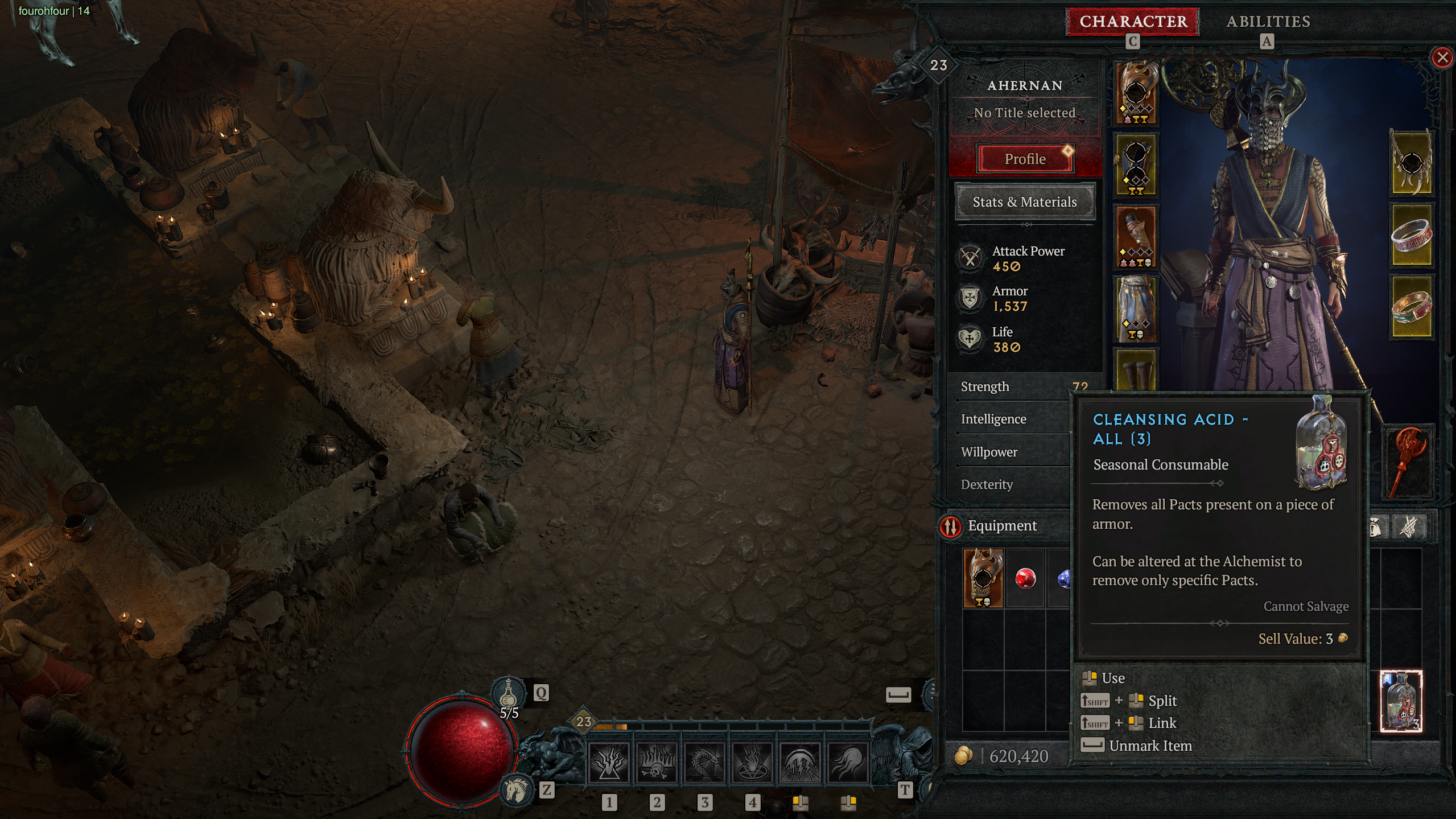Season of Blood has added a plethora of new content to Diablo 4 in the game’s second season, including Blood Harvest season events, a new story, some brutal new endgame bosses, and a ton of new gear and game improvements. One of the central tenets of the new season is Vampiric Powers, a new power system that lets you turn blood into buffs and bonuses.
Vampiric Powers are tied to Pacts, which effectively serve as the cost of the powers. The number of Pacts you can use for Vampiric Powers is determined by the number of Pacts you have on your armor. And when it comes to managing your Pact totals and distribution, you’ll eventually need some Cleansing Acid.
We’ve got all the details you need for using and getting Cleansing Acid during Diablo 4 season two, Season of Blood.
What does Cleansing Acid do in Diablo 4?
Cleansing Acid is a single-use seasonal consumable item in Diablo 4, only used during the Season of Blood, to cleanse a piece of armor of all the Pacts on it. To use Cleansing Acid, right-click on it in your equipment window, then select the piece of armor you want to cleanse of Pacts.

Why would you want to do this? Each piece of armor can hold up to a maximum of five Pacts. When you loot armor, it can have any range of Pacts on it; it can have between one to five Pacts, and it can have either a mix of the three kinds of Pacts (Ferocity, Eternity, and Divinity) or just one kind. I’ve picked up a piece of chest armor before that just had five Ferocity Pacts and nothing else.
Let’s say you find a really nice Legendary with a powerful effect and a good collection of bonuses, but it’s maxed out with the Pacts you don’t need for your Vampiric Powers. Just apply a single Cleansing Acid to it and then you can affix Pacts in your equipment tab to the freshly cleansed piece of gear.
You can also take Cleansing Acid to an Alchemist at a settlement and spend a small material/gold cost to have it altered so it only removes one kind of Pact from a piece of gear. You can also spend Potent Blood at the Alchemist to craft a specific Pact.
How to get Cleansing Acid in Diablo 4
Cleansing Acid can be picked up as loot from dead Blood Seekers, looted from chests or enemies in an active Blood Harvest event, looted from Opulent Coffins, or given as a reward for completing quests in the seasonal story and progressing through the Season Journey.
Hunting Blood Seekers during a Blood Harvest will be your most plentiful and likely source of Cleansing Acid. During a Blood Harvest, you can explore the active area to rescue civilians, complete world events, and collect Blood Lures to lure out Blood Seekers.
You can also craft Cleansing Acid at the Alchemist, but it’s expensive at 100 Potent Blood per bottle.







Published: Oct 18, 2023 04:36 pm